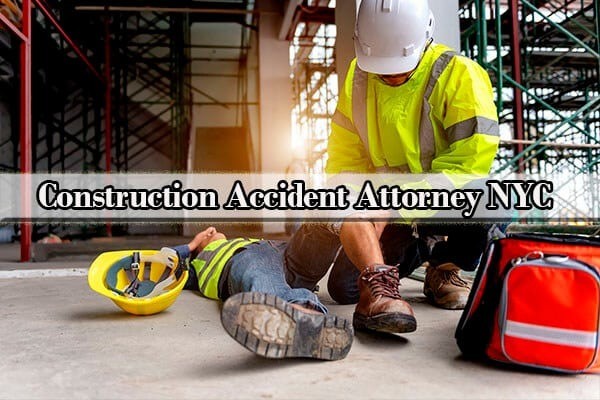Accidents happen, and sometimes they result in injuries due to slips and falls. In New York, where construction is a prevalent industry, slip-and-fall accidents can occur frequently, leading to serious injuries. If you’ve experienced a slip and fall on a construction site or any other premises, understanding the crucial types of evidence you need for a slip and fall claim is vital. In such cases, consulting with a New York construction injury attorney
Table Of Content
What Types of Evidence Do You Need For A Slip & Fall Claim?
New York construction accident lawyer can be invaluable. They can guide you on what evidence is necessary to support your claim effectively.
New York construction accident lawyer can be invaluable. They can guide you on what evidence is necessary to support your claim effectively.
-
Photographic and video evidence:
One of the most powerful pieces of evidence in a slip-and-fall case is photographs or videos of the accident scene. These visuals can capture the dangerous conditions that caused the fall, such as wet floors, uneven surfaces, or debris. Make sure to take multiple angles and perspectives to provide a comprehensive view of the accident site.
-
Witness Statements:
Eyewitness accounts can significantly strengthen your case. If anyone saw your accident, ask for their contact information and a brief statement regarding what they witnessed. Their statements can corroborate your version of events and provide crucial support for your claim.
-
Accident Report:
In many cases, businesses or construction sites are required to fill out an accident report when an incident occurs on their premises. Make sure you obtain a copy of this report, as it can contain vital information about the incident, including what caused your fall and the immediate steps taken following the accident.
-
Medical Records and Bills:
Comprehensive medical records detailing the extent and nature of your injuries are essential. These records can link your injuries directly to the slip and fall incident. Additionally, keeping track of medical bills, including hospital visits, surgeries, medications, and rehabilitation, is crucial for assessing the financial impact of your injuries.
-
Maintenance Records:
In the case of slips and falls on a construction site or any other premises, maintenance records can play a crucial role. Records of maintenance or lack thereof can indicate negligence, such as failure to address a hazardous condition promptly.
-
Weather Reports:
If weather conditions were a contributing factor in the slip and fall, obtaining official weather reports for the day of the incident can support your claim. Slippery surfaces due to rain, snow, or ice can increase the likelihood of accidents and injuries.
-
Footwear Analysis:
An analysis of the footwear you were wearing at the time of the accident can provide insight into whether it contributed to the slip and fall. Certain types of shoes may be more or less suitable for the conditions that led to the accident.
-
Expert Testimonies:
Expert witnesses, such as engineers or safety experts, can provide professional opinions on the condition of the premises, safety protocols, and whether negligence played a role in the accident.
-
Employee Records and Training Logs:
If the slip and fall occurred on a construction site or within a business, examining employee records and training logs can reveal whether the responsible parties adequately trained their staff on safety procedures and maintained a safe working environment.
If you’ve been involved in a slip-and-fall accident, gathering the right types of evidence is crucial for a successful claim. Consulting with a knowledgeable New York construction injury attorney or a New York construction accident lawyer such as Siler & Ingber can help ensure that you collect and present the necessary evidence to support your case effectively. Remember, timely and accurate documentation of the incident can make a significant difference in the outcome of your claim.
Conclusion
In conclusion, if you’ve been involved in a slip-and-fall accident in New York, collecting the right evidence is crucial for a successful claim. This evidence includes photographs, witness statements, accident reports, medical records, maintenance records, weather reports, footwear analysis, expert testimonies, and employee records. Consulting with an experienced New York construction injury attorney or a New York construction accident lawyer can help ensure you gather and present the necessary evidence effectively. Timely and accurate documentation of the incident can make a significant difference in the outcome of your claim, ensuring you receive the compensation you deserve.


